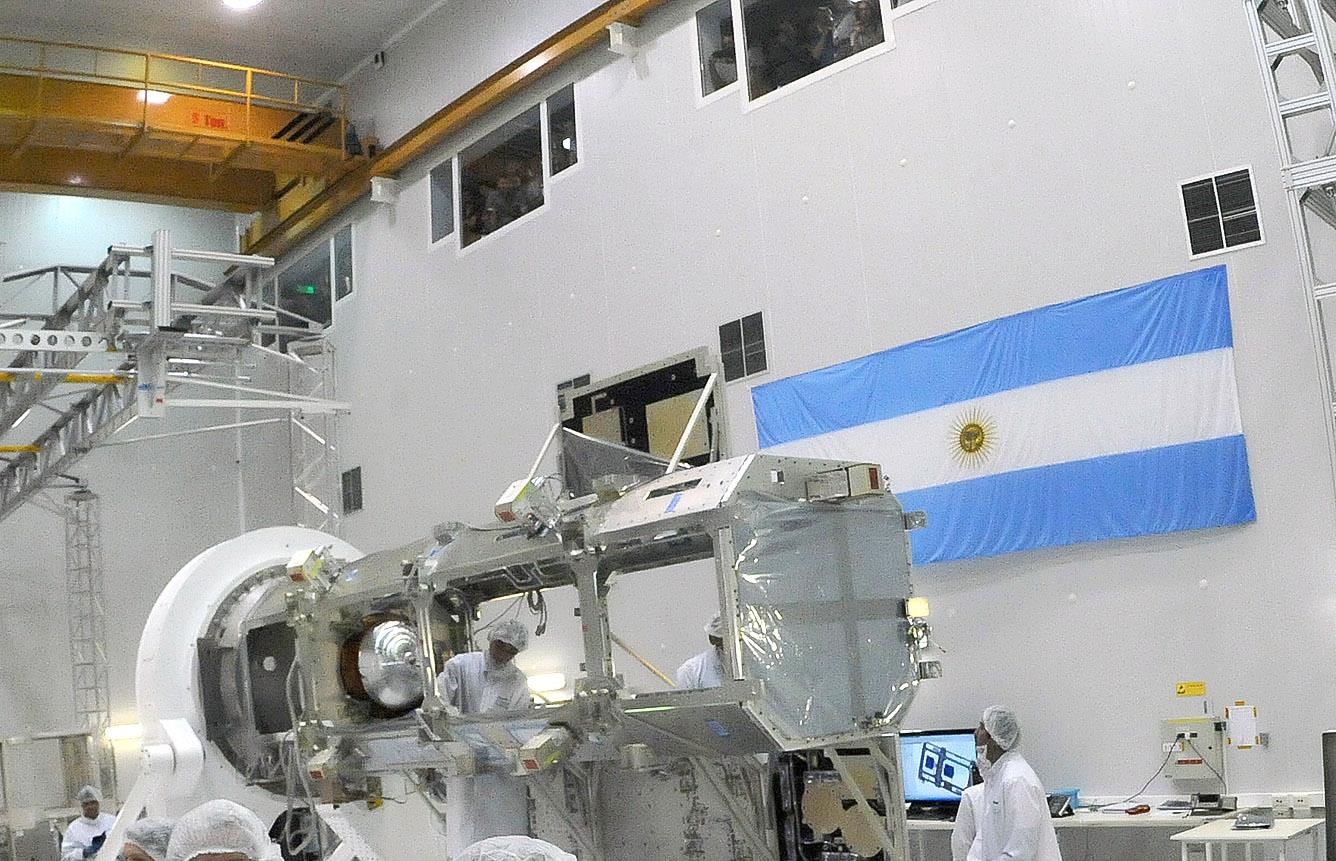BUENOS AIRES, July 27 (Xinhua) -- Argentina is preparing for the launch of the first of four satellites into space to help monitor geological conditions and manage disasters, according to its national space agency.
Argentina's Microwave Observation Satellite, the SAOCOM 1-A, will be shipped later this month to the U.S. Vandenberg Air Force Base in the southern state of California, where it is to be launched in September, according to the National Space Activities Commission (CONAE).
The satellite, designed and built by the prestigious state-owned high-technology firm INVAP, will contribute to a number of tasks, CONAE spokesperson Josefina Peres told reporters during a tour of INVAP's headquarters in Bariloche, in southern Rio Negro province.
With an expected operational life of 5.5 years, the satellite will orbit some 620 km above the earth's surface. Its powerful antenna is capable of sensing up to two meters below the earth, to collect data useful for agriculture, fishing, mining, geology, urban development and disaster management.
"The SAOCOM ... will be capable of capturing 500 images as it orbits 15 times a day," Peres said.
Its mission, she said, will focus on two aspects: measuring soil humidity in the Argentine Pampas, or lowlands; and detecting and helping to manage natural and human disasters, such as floods, landslides, oil spills, fires, earthquakes and volcanic eruptions.
Once in orbit, the satellite will mark CONAE's fifth space mission, as it joins the country's two prior orbiting satellites ARSAT-1 and ARSAT-2, which were built by Argentine satellite maker ArSat and launched in 2014 and 2015, respectively.
SAOCOM 1-A features six computers that work in synchronicity and weighs some 3,000 kg. Its antenna, designed in central Cordoba province, is composed of 140 smaller antennas.
As many as 600 Argentine professionals have worked on the 500-million-U.S.-dollar satellite since 2011, in fields ranging from aeronautical engineering to mechanics.
"Physicists, engineers, agronomists and aeronautical technicians have worked on this project. It's quite enormous," Peres said, adding that university students also took part in the initiative.
SAOCOM 1-B is expected to be launched in 2019, followed by another two satellites as part of the SAOCOM 2 series, which will have the experiences collected from the first mission built in.
Both INVAP and CONAE have ample experience in designing satellites and in space missions, as they had developed the SAC-B, SAC-A, SAC-C and SAC-D AQUARIUS satellites.
